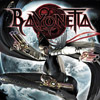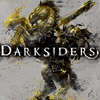Content Round-up:
For the month of "January 2010"
|
Bayonetta | Darksiders | Divinity II: Ego Draconis | Army of Two: The 40th Day | Dark Void | Mass Effect 2 | No More Heroes 2: Desperate Struggle |
About Content Round-ups: The below outlines cover the top games of each month at the end of their release month, and are intended as accurate but incomplete sum-ups of each game's content and gameplay, until each of said games can be thoroughly reviewed in their entirety—by me—at a later point. None of my recommended age ratings are final. Games are listed by their release date.
Gameplay sum up:
Bayonetta, set in a world loosely inspired by Dante's Divine Comedy, revolves around the title character, who wakes after five hundred years of slumber to find herself with no memory of her origins. Shortly after, a mysterious man named Enzo tells her that an artifact called the "Right Eye" may have clues to her past, thus she sets out to find it, and in the process, hopefully recover her memory. From the man behind the Devil May Cry series, this plays similarly to it, as you use Bayonetta's witch powers—fueled by mythical demons—to fight your way through the monstrous, bird-like "angels" with a variety of combo-heavy melee, gun, sword and magic attacks (with her hair, which her suit is made of), evade with jumps and "Witch Time" (briefly slows time, allowing Bayonetta to perform more devastating attacks), all the while you pick up "Lollipops" to replenish health/magic and collect halo-like rings dropped by enemies to buy items, new moves and upgrade weapons. At the end of each level, players will be ranked by medals, with a system similar to Viewtiful Joe; the less health items used and deaths had—among several other factors—the better the player's score.
Content sum up:
The ESRB rated this game "M" for Mature, citing "Blood and Gore," "Intense Violence," "Partial Nudity," "Strong Language" and "Suggestive Themes." Intense Violence refers to the fact that you will be using multiple melee moves, guns, swords, magic attacks (with Bayonetta's hair; it will often transform into giant objects and pummel enemies) and the occasional enemy weapon (spears, trumpets that shoot balls of energy, etc.) to take part in the ultra violent, high-octane but, in turn, fantastical, highly unrealistic combat system. Blood and Gore refers to the effects above weapons have, as the far removed, bird-like "Angel" enemy spurts and jets heavy amounts of thick, congealed blood (which can't be disabled) from their then frequently dismembered limbs, necks and severed waists, as it then splatters onto the surrounding area (though both bodies and blood do disappear promptly after being dispatched). Bayonetta can also use "Tor- ture Attacks" to summon Iron Maidens (fully impaling enemies once closed) and guill- otines (to decapitate them), causing very gory results...
"Angels" will become defeathered as you attack, revealing their grotesquely raw, red muscular structure underneath, along with protruding vertebrae; and certain types of enemies will frequently explode into large, bloody chunks. Suggestive Themes refers to Bayonetta's over-sexed persona, provocative movements and appearance; during cutscenes, the camera often focuses on her behind, crotch and jiggling breasts; finish- ing moves are dubbed, "Climax," along with the game's highest difficulty named, Non- Stop Infinite Climax; and some Torture Attacks are semi-erotic/S&M in nature. Partial Nudity refers to the fact that Bayonetta's outfit is made of her hair, and when she per- forms more taxing magic attacks, the majority of it flies off, revealing brief glimpses of her bare behind and the sides of her breasts; and many of her alternate costumes show a similar amount of skin—some thin tops giving a shadowed view of her nipples beneath. Strong Language refers to the fact that characters will frequently use d*mn, hell, a**/hole, b*tch, sh*t and the f-word throughout. And Bayonetta is seen having a drink of alcohol with her merchant friend in a few cutscenes.
Gameplay sum up:
Darksiders takes place on a recently decimated, post-apocalyptic Earth, one that was premature in its arrival—the supposed culprit; a member of the Four Horsemen of the Apocalypse, War. The Charred Council, finding War guilty and to sentence his death, are instead convinced by War to allow him to re-enter Earth and find the true culprit, but on one condition; the "Watcher" must accompany him—War strays from his quest, he dies. To complete it, you'll have to navigate War through the free-roaming, Legend of Zelda inspired "Crossroads" overworld (eventually with his horse, Ruin, for quicker travel) to dungeons of interests, where you'll then platform (climb, jump, swim, etc.), puzzle-solve, fight your way to their end, and defeat the boss in order to gain abilities that will allow further exploration of the Crossroads, and in turn, following dungeons. In combat, War will use his sword, Chaoseater (along with those like a throwing blade and a pistol), to fight the demonic enemies with a variety of combos and his "Wrath" magic, as he evades their blows with dodges, blocks and counters—upon their deaths, enemies drop currency, allowing War to purchase various upgrades.
Content sum up:
The ESRB rated this game "M" for Mature, citing "Blood and Gore," "Intense Violence" and "Suggestive Themes." Intense Violence refers to the fact that you will be using a sword and scythe to frantically hack away at the demon, angel, skeleton, and undead enemies, along with a grapple chain to pull them in, and a pistol, throwing blade and your Wrath magic to attack from long range. Blood and Gore refers to the effects the weapons make, as enemies spurt heavy, pronounced clouds of blood, and the camera then focuses in for gruesome finishing moves, where War uses his weapons to break their necks, rip off their wings, dismember and decapitate them, while what remains of their stumps and punctured organs jet heavy blood. And Suggestive Themes refers to certain female enemies, who's scant garb afford partial views of their bare midriffs and behinds—although their appearance is otherwise inhuman. There's also some mild language, with words such as hell, d*mn and bastard used.
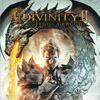
|
#3 Divinity II: Ego Draconis Available for: Xbox 360 - PC |
Gameplay sum up:
Divinity II: Ego Draconis, sequel to Divine Divinity, is a third-person RPG that not only shares the same graphics engine with The Elder Scrolls IV: Oblivion, but its gameplay style, and revolves around a newly trained Dragon Slayer—you—whose job it is to rid Rivellon (the game's fantasy world) of dragons. After you customize your character's gender, appearance and skills, you will explore the open-world as you enter places of interest and converse with inhabitants using the game's branching dialog system, take on quests, and fight your way through the game's overworld and dungeons, filled with the mythical, wild and often undead enemies, all the while collecting items, weapons armor and experience, which can then be used to customize the character's stats and skills. Further on, you'll gain access to your own tower, a hub of sorts, where you can upgrade weapons and armor, assemble creatures, which can be called to your side in battle, and you will even earn an ability to transform from a human into a full-fledged dragon and back again, allowing you to take combat to the sky.
Content sum up:
The ESRB rated this game "M" for Mature, citing "Blood," "Suggestive Themes," and "Violence." Violence refers to the fact that you will be using swords, melee and magic attacks to fight the human, goblin, animal, undead and dragon enemies as a "Dragon Slayer," or with fire balls when in your dragon form, with the relatively subdued, real- time (but stats based) combat system. Blood refers to the fact that enemies will spurt light amounts of it when hit; many areas are covered in heavy, pre-existing amounts of blood; the limbs of slain foes can be used to make custom creatures; goblin hearts can be collected for financial gain; and bloodied, decomposing human bodies are seen dangling lifelessly from torture devices (gallows, chains, etc.), burning on stakes, and lying, often with piles of human bones and skulls, throughout. And Suggestive Themes refers to the fact that there are light mentions of dirty limericks, along with some off color remarks in dialog, and a choice few of the readable books contain said limericks or suggestive lines (though never with sordid detail)—otherwise, no romantic relation- ships can be pursued, and it contains no brothels or the like.
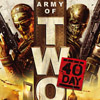
|
#4 Army of Two: The 40th Day Available for: Xbox 360 - PS3 - PSP |
Gameplay sum up:
Army of Two: The 40th Day, like the first installment, is a co-op focused third-person shooter, and revolves around Tyson Rios and Elliot Salem several years after the first game's timeline. Now self-employed and working a mission in Shanghai, the situation soon goes horribly wrong when terrorist-calibur mercenaries begin to blow up the city skyline—literally—and invade the streets, Salem and Rios will have to work together, as always, if they hope to make it out of Shanghai alive. To do this, you and your AI partner (or second player) will combat the enemy with your varied arsenal, returning co-op moves (that can now be used anywhere at any time), the Playbook for planning before going in and the Aggro system, which will allow one teammate to draw enemy fire while the other is then free to flank and pick them off. Like the first, weapons can be customized and now taken from the downed enemies; parts can be retrieved from armored boxes to make weapons, free of charge; and new mini-boss-like Heavy and Super Heavy enemy types make an appearance—when downed, they'll drop weapons otherwise unavailable, like flamethrowers and Gatling guns...
Also new to this installment is the moral system, in which, at certain points, you must decide on whether to kill or not kill supposed allies, steal or refrain, save hostages or let them die, etc. If a second player is participating, whoever presses the prompt first for the present moral decision is the one who makes the choice. Additionally, civilians have been added to the city battlefields, where you may choose to shoot those in the way of your enemies, let the enemy do the same or rescue said civilians instead. And multi-player makes a return; matches are played in two-man teams with four modes total, from basic a deathmatch to "Extraction," in which all teams must work together to fight the onslaughting waves of enemy AI. Last of all, the PSP version includes the same overall gameplay, moral decisions, story, setting and characters, but unlike the Xbox 360 and PS3 versions, it is played in a three-quarter overhead perspective, with gameplay that is more focused on arcade-like action.
Content sum up:
The ESRB rated this game "M" for Mature, citing "Blood and Gore," "Intense Violence" and Language. Intense Violence refers to the fact that you'll be using a variety of shot- guns, machine-guns and sniper-rifles (etc.) to combat enemy mercenaries, along with a knife and/or bayonet to take them down with brutal stealth moves and grenades to blow multiple targets away. Moral choices abound throughout, with an ability to shoot running civilians down as you fight the enemy (if you so choose), either "Execute" or "Release" enemy hostages for Morality Points; use civilians as human shields; cuff or kill disarmed enemies; and use the moral system to make tough decisions. Blood and Gore refers to the fact that characters will spurt moderate amounts of blood when hit, which will then splatter thickly on the victims' clothing and the surrounding area; and direct headshots sometimes result in enemy/civilian heads blowing off in a thick cloud of blood. And Language refers to the fact that characters will use d*mn, hell, a**hole, b*tch, and—at worst; there are no f-words—sh*t throughout.
The PSP versions has separate descriptors, with the ESRB citing, "Blood," "Language" and "Violence." This version's Language and Violence are very similar to the 360/PS3 version, and moral choices are also retained, however the blood effect are lessened, with the lack of gore, that is, no exploding enemy heads, etc.

|
#5 Dark Void Available for: Xbox 360 - PS3 - PC |
Gameplay sum up:
Dark Void revolves around protagonist, William Augustus Grey, who, after piloting his plane into the Bermuda Triangle, is sent into a parallel universe in which the humans, the Survivors, fight robotic aliens known as the Watchers. Soon finding himself with a jetpack and (at the present) unable to return to his world, William decides to help the Survivors (historical figure, Nikola Tesla, included among them) in their fight with the Watchers. And gameplay consists of using William's newfound, energy weapon-armed jetpack to fight Watcher piloted flying saucers (that can be hijacked), their automated turrets and giant on-foot "Archon" walkers (among others); "vertical cover system" to take cover on vertical surfaces with his jetpack; and the more traditional third-person shooting mechanics to take cover with objects while using his energy guns, grenades and melee attacks to dispatch of said enemy aliens.
Content sum up:
The ESRB rated this game "T" for Teen, citing "Animated Blood," "Mild Language" and "Violence." Violence refers to the fact that you'll be fighting the robotic alien Watchers with a variety of energy weapons (machine-guns, rifles, etc.) and melee attacks (that often finish with stomping on robot heads, breaking their necks or holding them from the back and shooting clean through) in the on-foot combat; or dogfights, where you can shoot them down with your jetpack energy weapons (causing large explosions) or hijack their UFOs by ripping off the cockpit panel, beating, and then tossing them out. Animated Blood refers to the effects the weapons have on the robotic enemy, as they spurt moderate amounts of blue fluid—and sparks—which then splatters lightly on the surrounding area—William does not shed blood. And Mild Language refers to the fact that words such as hell, d*mn, bastard and b*tch are lightly used.
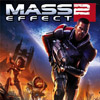
|
#6 Mass Effect 2 Available for: Xbox 360 - PC |
Gameplay sum up:
Mass Effect 2 picks up close to where the first ended; after protagonist Shepard's ship is shot down by an unknown enemy during a routine patrol, his "dead" body is ejected out into space—within a short time, a mysterious group procures it. Flash forward two years later, Shepard awakes and is brought before his benefactor, the "Illusive Man," who informs him the he was revived by the "Lazarus Project," and that the aliens who attacked his ship, the Collectors, are abducting entire human colonies—he wants them stopped: by Shepard. Like previous BioWare games, you'll customize your character's stats, class and appearance, and then enter the universe to gather a team fit enough to take down the Collectors, as you take quests (by traveling to planets in your ship), fight alongside your two-man team with its real-time combat system (some light turn- based elements included), level-up, and make moral choices with its branching dialog system, which will effect the party members for good or bad and set up world events differently depending on what actions you decide to take.
Like the first, you can begin with a custom male/female character, go with the default (advertised) Shepard appearance, or this time, use your save from the previous game to rollover all of your moral decisions/orientation, relationships and story twists from the first—this includes what party members appear; if a character died as a result of your choices in the first, they won't come back in this sequel. The graphics have been improved, with a complete lack of the slow-down and texture pop-in that plagued the first; the number of character animations have been increased; facial expressions are enhanced, with more cinematic angles to show them off; and the once desolate, bland side-mission planets have been scrapped, along with the Mako vehicle, for a far more focused experience. During certain conversations, you can interrupt mid-dialog, or use either the evil or good button prompt to perform a respective action when their icons pop-up on-screen; there are now nineteen weapon types compared to four in the first installment, and there's no longer an option to level up weapon skills; if you can wield it, the weapon's power will be at full strength from the start.
Content sum up:
The ESRB rated this game "M" for Mature, citing "Blood," "Drug Reference," "Sexual Content," "Strong Language" and "Violence." Violence refers to the fact that you'll use a variety of energy weapons (submachine guns, shotguns, assault rifles, pistols, etc.) to shoot the alien, robot and (odd) human enemy, force-like powers to telekinetically fling them, freeze (as they then shatter into pieces) and set them on fire, along with an occasional choice to threaten and/or rough up enemies during interrogative dialog. Blood refers to the fact enemies will prominently but not gratuitously shed blood in a variety of (sometimes red) colors—which is often overwhelmed by the flashy particle effects—and blood can be seen pooled underneath dead bodies. Sexual Content refers to the fact that a new party member, the bald, heavily tattooed Subject Zero only has a thin, strap-like bra covering her nipples, and acts in a notably masochistic manner; a bar similar to that in the last game is available to explore (an ability to order drinks here included; the screen can sway afterwards), with female aliens—clad in skin-tight outfits—pole dancing provocatively on a circular stage...
There are a few somewhat sexually charged—but non-graphic—lines throughout; and like the first game, you can pursue a romantic relationship with party members of the opposite sex. If it is explored to its fullest, the party character of choice will approach and offer sex; a very brief scene will take place in which they are both nude, but with the camera's main focus from the neck up, quick, tight shots, and each of the scene's brief nature (less than a minute), no "parts" are seen, and the actual act of sex is not depicted. The relationships will take steady work and careful dialog choice throughout the game to garner any of these results; and besides, all of the above is fully optional and not integral to the game's story. Drug Reference refers to the fact that there are mentions of the game's fictional illegal drugs, with a few side quests and some dialog alluding to their use by side-characters. Strong Language refers to the fact that chara- cters use hell, d*mn, God d*mn, a**, and b*tch, with occasional uses of sh*t and the f-word throughout. And like before, you can choose to be evil. Read my review of the first here to get a better idea of what you will be doing.
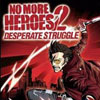
|
#7 No More Heroes 2: Desperate Struggle Available for: Wii |
Gameplay sum up:
No More Heroes 2: Desperate Struggle, set three years after the first, opens with the protagonist, Travis Touchdown, being out of the assassin game for these three years. And as a result, has lost his rank, all the while his previous enemy, "Pizza Batt" corp. (once the Pizza Butt), have taken over the city of Santa Destory. Sylvia, the assassin who got Travis into the killing game, convinces him once again to return to it, regain his rank, and take down the Pizza Batt corporation, run by the enigmatic, "Jasper Bat Jr." To do this, you'll be using Travis's beam katana (think Lightsaber) to fight through Jasper Bat Jr's henchmen and the assassins, with the Wii motion controls, one rank at a time (a total of 50; though 25 of those are a single, giant mecha battle), in order to eventually become the best. New to this game are dual wield katanas, among others; added wrestling moves, and an ability to turn into a (literal) tiger during combat; two new characters are playable at certain points; there are new mini-games in the form of retro arcade titles—money earned from these can be used to buy outfits and skills; and a streamlined city map replaces the overworld of the last.
Content sum up:
The ESRB rated this game "M" for Mature, citing "Blood and Gore," "Intense Violence," "Partial Nudity," "Sexual Themes," and "Strong Language." Intense Violence refers to the fact that you will be hacking and slashing enemies apart with your Lightsaber-like sword in an extreme, over-the-top but somewhat cartoonish manner (the game is cel- shaded), taking them out with wrestling moves or even pouncing, and then shredding at them in your tiger form. Blood and Gore refers to effect your weapons produce, as your beam katana fully splits enemies in half from varying angles and/or decapitates them as they then jet giant clouds of thick blood—strangely intermixed with cash; and cutscenes also depict this dismemberment frequently, sometimes in slow motion, with an example being two bikini-clad women getting caught in an assassin duel, and behe- aded as a result—the heads are then seen skiding on the floor. Sexual Themes along with Partial Nudity refer to the fact that Travis and Sylvia flirt shamelessly throughout cutscenes, often as the camera focuses on her scantily clad behind and breasts, which are sometimes bare, although careful angles block their full view...
And the majority of female assassins are clad in scant and/or skintight garb (such as schoolgirl and bondage outfits, etc.), revealing large amounts of cleavage and behind, both of which bounce around with the lightest of movement. Travis can watch clips of the fictional anime, "Bizzare Jelly," in which animated females are—satirically—shown with ridiculously huge, bouncing breasts, or with their clothes flashing on/off, giving a brief view of their bare behinds for a split second. At one point, Sylvia kneels down at Travis's crotch, where he suggestively holds his Katana's hilt, as she kisses the blade; he mocks pleasure when its laser extends. And on the same note, the sword's energy meter is represented by a cartoonish red penile-meter at the screen's corner; it flops around while going from varying states of erect and flaccid, when full, it has a happy face, when depleted sad, and to restore it, you must vigorously shake the Wiimote as Travis does the same at his crotch. Strong Language refers to the fact that characters frequently use sh*t and the f-word in colorful phrasings. And to save progress, Travis will "take a dump" on the toilet (though, thankfully, with no detail).
